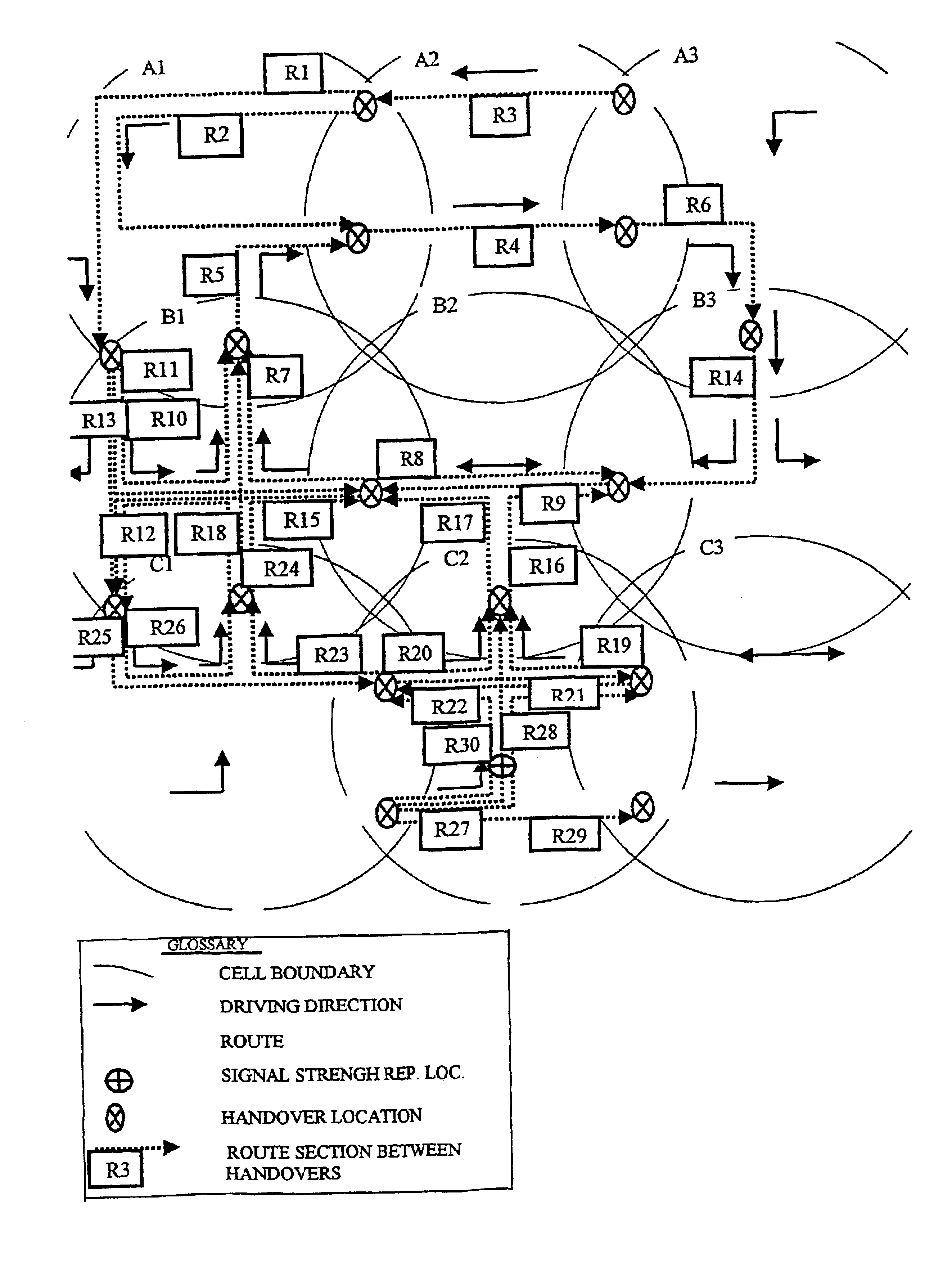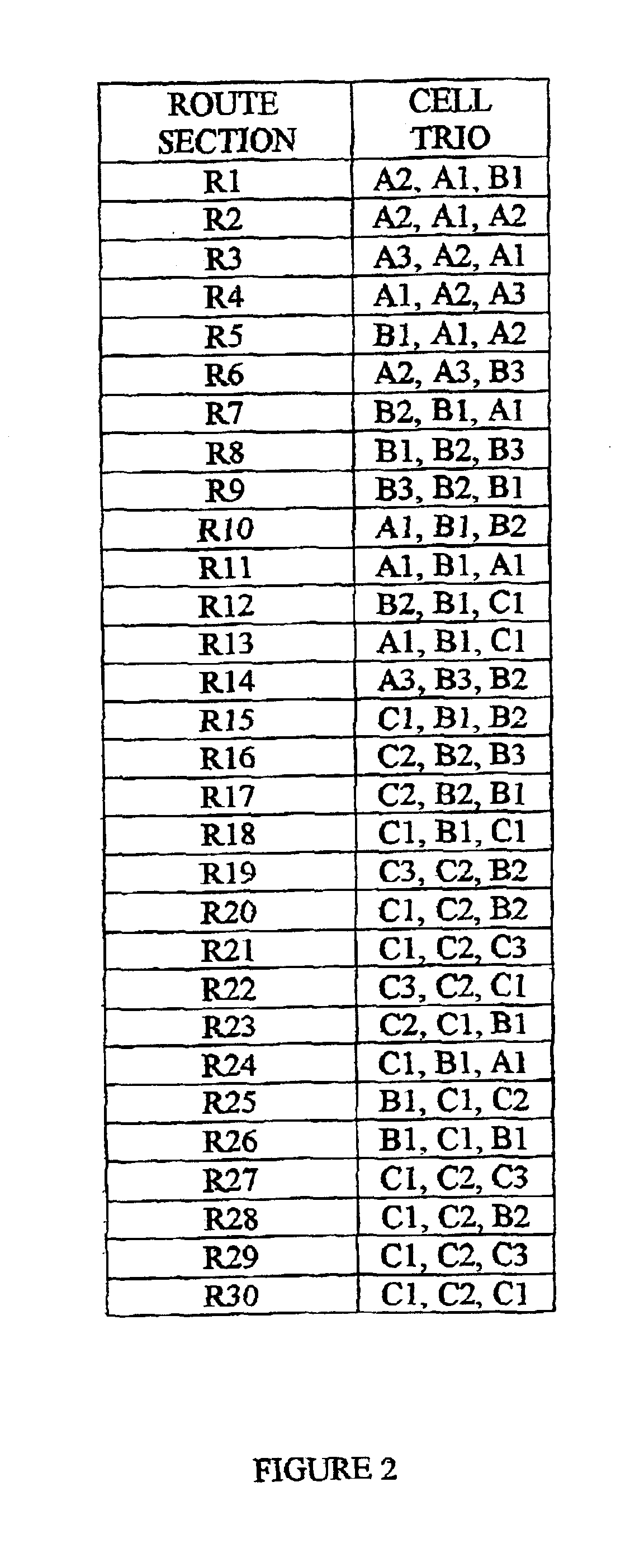Method for monitoring cellular communication, and system therefor
- Summary
- Abstract
- Description
- Claims
- Application Information
AI Technical Summary
Problems solved by technology
Method used
Image
Examples
Embodiment Construction
[0033]The current invention derives vehicle location information from the data available on the cellular network. There are 3 main sources from which the data may be collected:[0034]1. Mobile unit reports detailing the signal level from surrounding cells during calls. During a call the mobile unit periodically (every 30 seconds) reports the signal level for the surrounding cells, to be used by the network (the switch) as a basis for it's handover decisions. A single report may not indicate the exact location, since there may be several locations at which the signal level is the same. In addition signal levels may vary due to external factors. However, when several reports are matched against the possible routes a vehicle may take within a certain area, this can be turned into an accurate location accompanied by the exact timing.[0035]This information is available to the base station controller as an integral part of each call, and can either be extracted from the base station contro...
PUM
 Login to View More
Login to View More Abstract
Description
Claims
Application Information
 Login to View More
Login to View More - R&D
- Intellectual Property
- Life Sciences
- Materials
- Tech Scout
- Unparalleled Data Quality
- Higher Quality Content
- 60% Fewer Hallucinations
Browse by: Latest US Patents, China's latest patents, Technical Efficacy Thesaurus, Application Domain, Technology Topic, Popular Technical Reports.
© 2025 PatSnap. All rights reserved.Legal|Privacy policy|Modern Slavery Act Transparency Statement|Sitemap|About US| Contact US: help@patsnap.com



